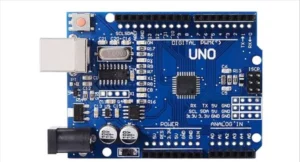What is OSAT?
An OSAT, or Outsourced Semiconductor Assembly and Test, refers to a company that specializes in providing services related to the final stages of semiconductor manufacturing.
In the semiconductor industry, the production of microchips involves multiple steps, including the creation of integrated circuits on silicon wafers.
After the fabrication of these circuits, they need to be packaged and tested before being integrated into electronic devices. This is where OSATs come into play.
Imagine you’re designing a new smartphone. You’ve developed the microchips that power the device, but those chips are still in the form of bare silicon wafers with multiple individual circuits.
These circuits need to be separated, packaged into protective casings, and rigorously tested to ensure they meet quality and performance standards.
This entire process is complex, resource-intensive, and requires specialized expertise and equipment.
Ingredients
Here’s where an OSAT comes in:
Packaging: The OSAT takes your bare silicon wafers and handles the process of cutting them into individual chips, placing them into protective casings (packages), and connecting them to the outside world through tiny wires or bumps.
Testing: The OSAT performs various tests on the packaged chips to ensure they function correctly. This involves electrical tests to verify the chips’ performance, functionality tests to ensure they operate as intended, and quality checks to identify any defects.
Finalization: Once the chips pass all the tests, the OSAT prepares them for integration into your smartphone or other electronic devices. This could involve preparing the chips for surface mounting onto a printed circuit board (PCB) or other integration methods.
In essence, an OSAT takes the raw semiconductor components and transforms them into fully functional chips ready for use in electronic devices.
This outsourcing of the assembly and testing stages allows semiconductor companies to focus on chip design and fabrication, while leaving the final stages to specialists who have the necessary infrastructure and expertise.
What is ATMP
ATMP, on the other hand, stands for Assembly, Test, Mark, and Pack. It’s a broader term that encompasses the entire process of transforming bare semiconductor components into packaged and tested chips ready for integration.
While OSATs specifically refer to companies that specialize in providing these services, ATMP includes the same stages but may also refer to these processes being conducted in-house by the semiconductor manufacturer themselves.
A real life example
OSAT (Outsourced Semiconductor Assembly and Test)
Think of a microchip like a tiny brain for electronic devices. Imagine you’re making a toy robot that uses this brain to move around and do cool things. Now, making these microchips is like baking cookies.
First, you make a big sheet of cookie dough (that’s like making many microchips on a big plate). But these dough pieces need to be cut into individual cookies, baked, and then put in little bags before you can use them.
An OSAT is like a special cookie factory. You don’t have to worry about cutting the dough, baking the cookies, and packing them – they do it for you.
They take the cookie dough (which is like the microchip), cut it into cookies (individual chips), bake them (test and make sure they work), and then pack them nicely in bags (put them in protective cases). Once they’re done, you get a bunch of ready-to-use cookies (microchips) for your toy robot.
Example: Let’s say you designed a smartwatch that can track your steps and heart rate. Inside the watch, there’s a microchip that does all the smart stuff. But you’re not an expert at making microchips.
So, you send the designs and raw microchips to an OSAT company. They take care of putting the microchip in the right package, testing it to make sure it works perfectly, and getting it ready to be put inside the smartwatch.
You can then focus on making the rest of the watch awesome without worrying about the tricky chip stuff.
ATMP (Assembly, Test, Mark, and Pack)
ATMP is like making a sandwich. Imagine you’re at a deli making a delicious sandwich. You start by putting different ingredients like bread, lettuce, cheese, and meat together.
Then, you check if everything is in the right place and if it tastes good. Finally, you wrap it up nicely to give to someone.
In the tech world, making a microchip involves similar steps. First, you assemble the different parts of the chip, like connecting tiny wires.
Then, you test the chip to make sure it works correctly, like checking if the sandwich tastes good. After that, you put a label on it (that’s the mark part) so you can tell which chip is which. Lastly, you pack it up carefully so it’s protected and ready to be used in a device.
Example: Think about a remote control for your TV. Inside, there’s a microchip that helps the remote control send signals to the TV.
The company that makes the remote control does everything from putting the microchip in place to testing it to ensure the buttons work, putting a label on it so they know it’s for the remote, and then packaging it up nicely so it doesn’t get damaged before you buy it.
So, while OSATs focus on specific steps in making microchips, ATMP covers the whole process from putting the parts together to testing, labeling, and packaging.
Conclusion
In summary, an OSAT is a company that specializes in the outsourced assembly and testing of semiconductor chips, taking them from bare wafers to packaged and tested components. ATMP is a broader term that encompasses these stages and can refer to both outsourced services provided by OSATs and in-house processes conducted by semiconductor manufacturers.




